Empowering Water Security: AquaNet’s Cutting-Edge Solution for Sustainable Aquifer Recharge
Challenge 1: Leveraging emerging digital technologies to strengthen water security with Managed Aquifer Recharge

INTRODUCTION
The project addresses water insecurity, exacerbated by aquifer overexploitation, climate variability, and population growth. These interconnected factors generate significant water stress that affects communities and industries.
Managed Aquifer Recharge (MAR) is a water reinsertion technology that allows for the replenishment of aquifers, either by using pumps to push water from a reservoir or by gravity.
Proper resource management in harmony with MAR plays an important role in water security, impacting socially, economically, and environmentally, to improve access to the resource, promote better decision-making, and enable future predictions.
WATER STRESS PROBLEMS
The problems of water insecurity are primarily reflected in the limited availability of the resource and unequal access to it. There are interrelated factors that contribute to the worsening of the problem, such as climate change, which alters weather patterns and local geography. Other factors include population growth, water pollution, and poor resource management.
These combined factors create water stress for populations, which in some areas can lead to deaths due to the lack of sanitation. The following figure presents some figures that represent the problems of water stress

AFFECTED
AquaNet directly impacts a wide range of stakeholders: local communities, government agencies, non-profits, industries, and environmental NGOs. Each faces challenges such as poor water management, limited access to clean water, and ecosystem degradation. AquaNet creates a comprehensive solution by connecting these groups through a centralized platform that enhances decision-making and transparency.
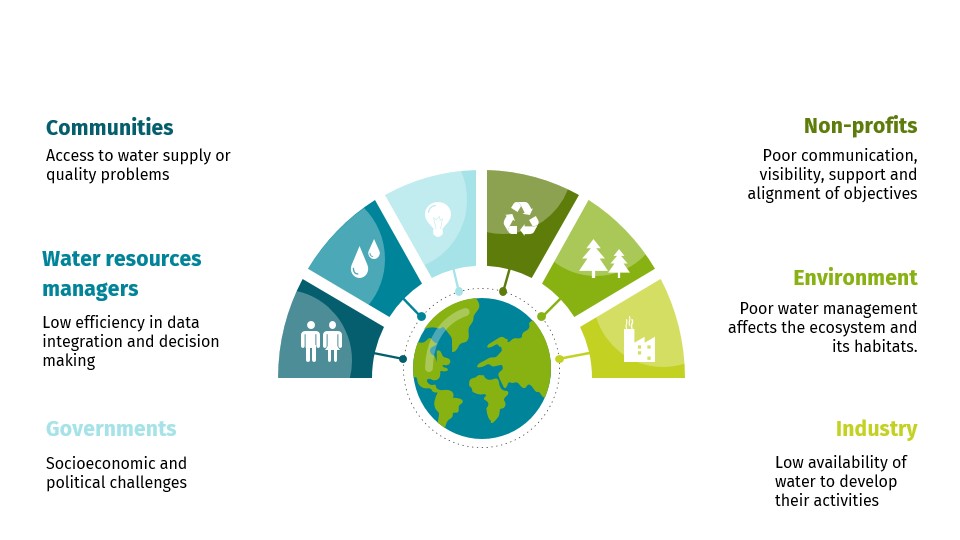
CAUSAL MAP
The causal map reveals the intricate links between water scarcity, aquifer overexploitation, and climate change. Stakeholders are interconnected within this cycle of stress: population growth drives demand, aquifer depletion affects communities and industries, and insufficient data hinders sustainable decisions. AquaNet addresses this through predictive tools that enable effective resource planning and mitigate future risks.
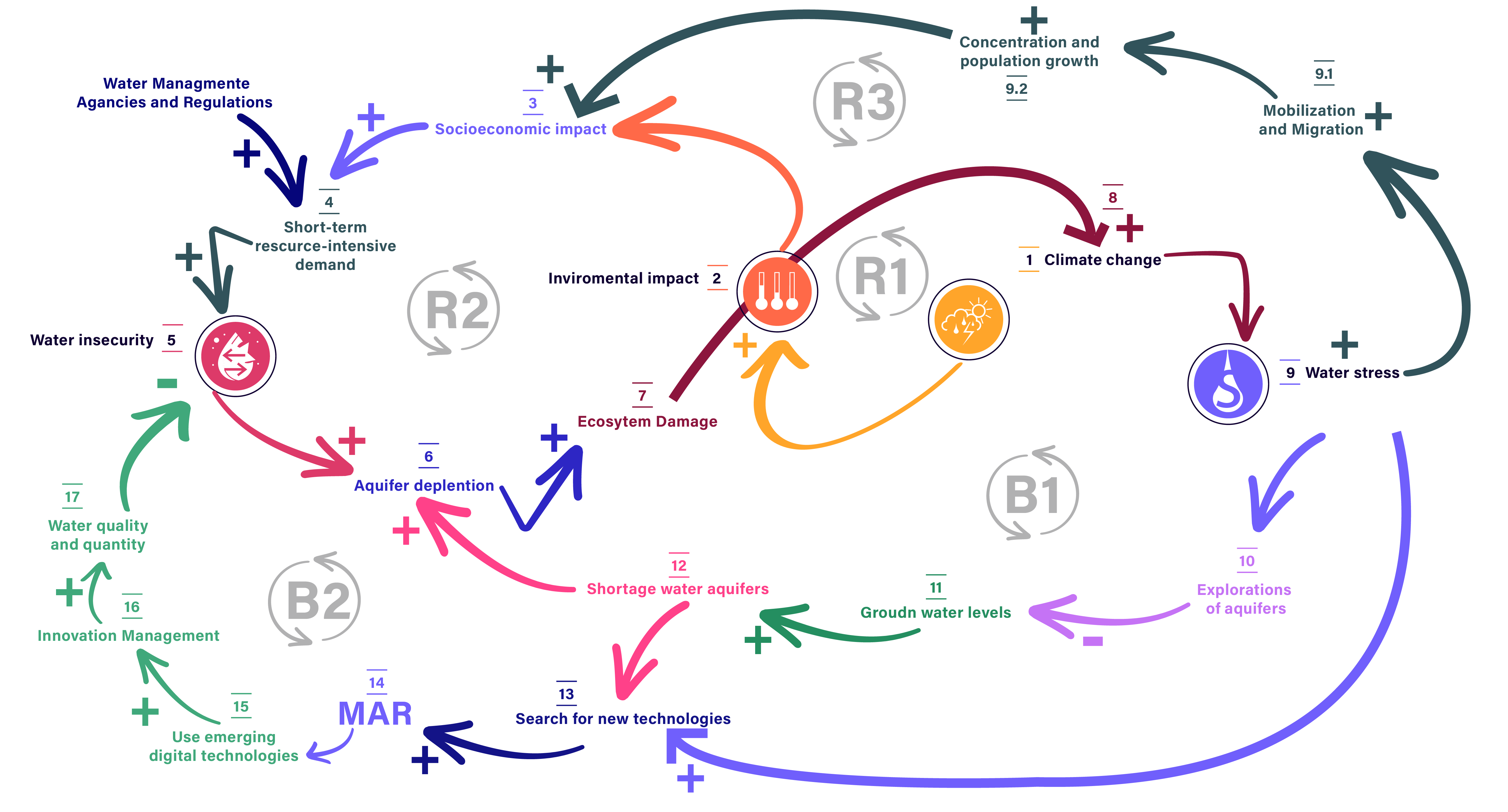
AQUANET
Now that we understand the problems of water stress, their interrelations, and impacts, we would like to introduce you to AquaNet.
AquaNet is an integrated platform that combines a strategic planning interface, real-time data monitoring, and an interactive dashboard for advanced visualization, along with a risk management module and data integration tools.
This platform will facilitate the collection, analysis, and interpretation of data, enabling automated reporting and future scenario prediction. Additionally, it will include tools for active stakeholder engagement, promoting efficient collaboration among government agencies, private companies, local communities, and other key players.
The information will be accessible from any device, ensuring transparency and optimization in the management of Managed Aquifer Recharge (MAR) projects, with a focus on enhancing water security and ensuring regulatory compliance.
Vision
By 2030, we aim to be the leading platform in the Americas for implementing digital solutions that guarantee water security in a world where every community has access to clean and sustainable water. We envision a future in which technology, knowledge, and collaboration allows for efficient management of aquifer resources, resilient, and equitable, contributing to climate adaptation and global well-being.
Mission
Transform water resources management through the integration of advanced technology and real-time data, focusing on Managed Aquifer Recharge (MAR). We seek to mitigate water stress, empower communities and stakeholders with innovative tools for informed decision-making, and ensure the long-term sustainability of water resources for present and future generations.
Digital Integration platform data flows and stakeholders’ integration
AquaNet integrates multiple data sources—hydrological sensors, satellite imagery, regulatory databases—into one platform. It analyzes and visualizes data in real-time, empowering stakeholders to make informed decisions, predict future water availability, and optimize Managed Aquifer Recharge (MAR). This data-driven approach enhances collaboration and ultimately secures water resources, solving the pressing issues faced by all involved parties.

CHART WORKFLOW
The platform will be designed using AI, IoT, and Machine Learning tools, enabling real-time simulation of aquifer recharge, data collection and storage, as well as data analysis to predict events, adjust recharge in real time, and define aquifer patterns.
The platform will connect to sensors installed on-site to collect data such as water level, water quality, or recharge rate.

The integration of the different digital tools will result in a platform that, based on the stakeholder’s profile, will display relevant information in a visual and interactive manner, all in one place:
Main Page:

Aquifer Manager:


Partner Company:
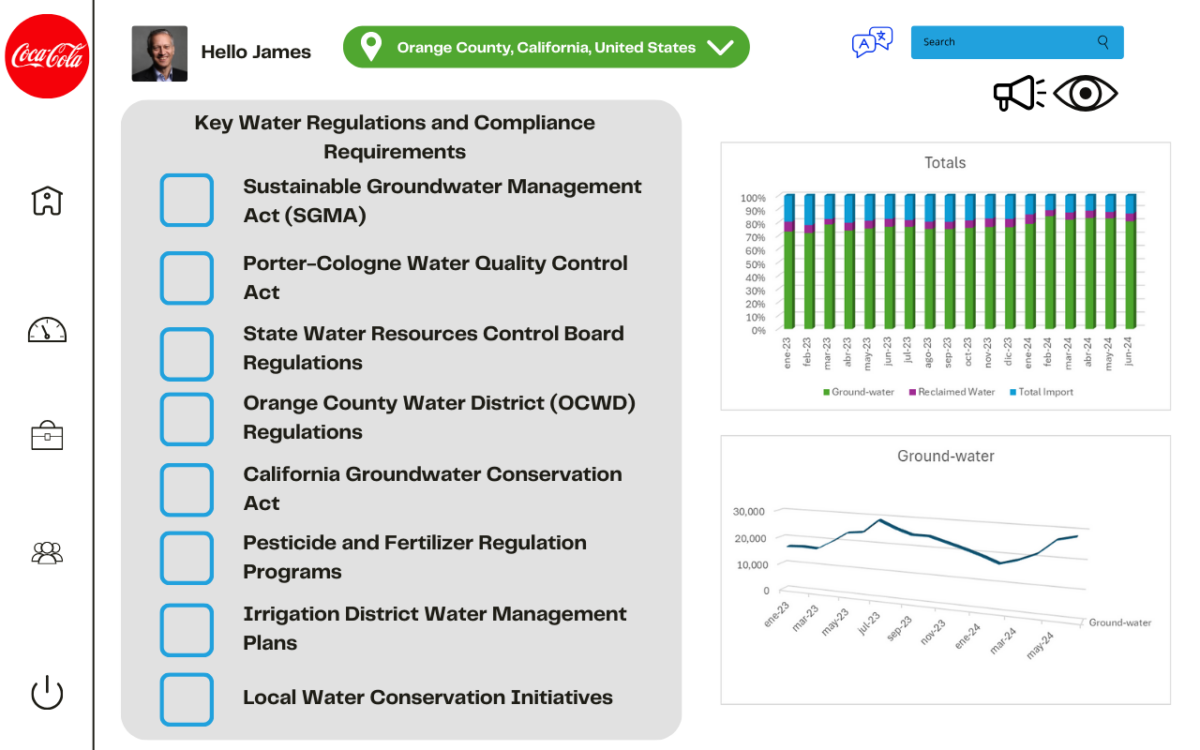
Community:

SUSTAINABLE BUSINESS MODEL
AquaNet’s business model is based on offering a water resource management platform through a scalable subscription model, targeting governments, companies in the agricultural and industrial sectors, and NGOs. Customers gain access to advanced tools for real-time monitoring, predictive analysis, and risk management through different subscription levels tailored to their specific needs. Additionally, AquaNet offers specialized consulting services and technical support, helping clients optimize MAR technology implementation and integrate the platform into their daily operations.
AquaNet also generates revenue through the sale of data analysis and customized reports, allowing clients to make informed decisions and anticipate extreme climate events. Our focus on scalability and geographic expansion, along with our strategic partnerships, enables us to adapt to diverse regions and needs. Moreover, we are committed to the Sustainable Development Goals (SDGs), including SDG 6: Clean Water and Sanitation, SDG 13: Climate Action, SDG 9: Industry, Innovation, and Infrastructure, SDG 12: Responsible Consumption and Production, and SDG 17: Partnerships for the Goals. Through our platform, we promote sustainable and efficient water management, modernize water infrastructure, strengthen climate resilience, and facilitate collaboration among multiple stakeholders, ensuring a positive and lasting impact on communities and the environment.

USER
The information displayed by the platform will be tailored to the user’s profile and needs: administrators, industries, and investors.
The platform will include a space for the community to access information, identify partners and suppliers, check the availability of educational programs and support. The goal is to improve information transparency, teamwork, public awareness, and resource optimization through the exchange of ideas and the use of new and better technologies such as MAR.

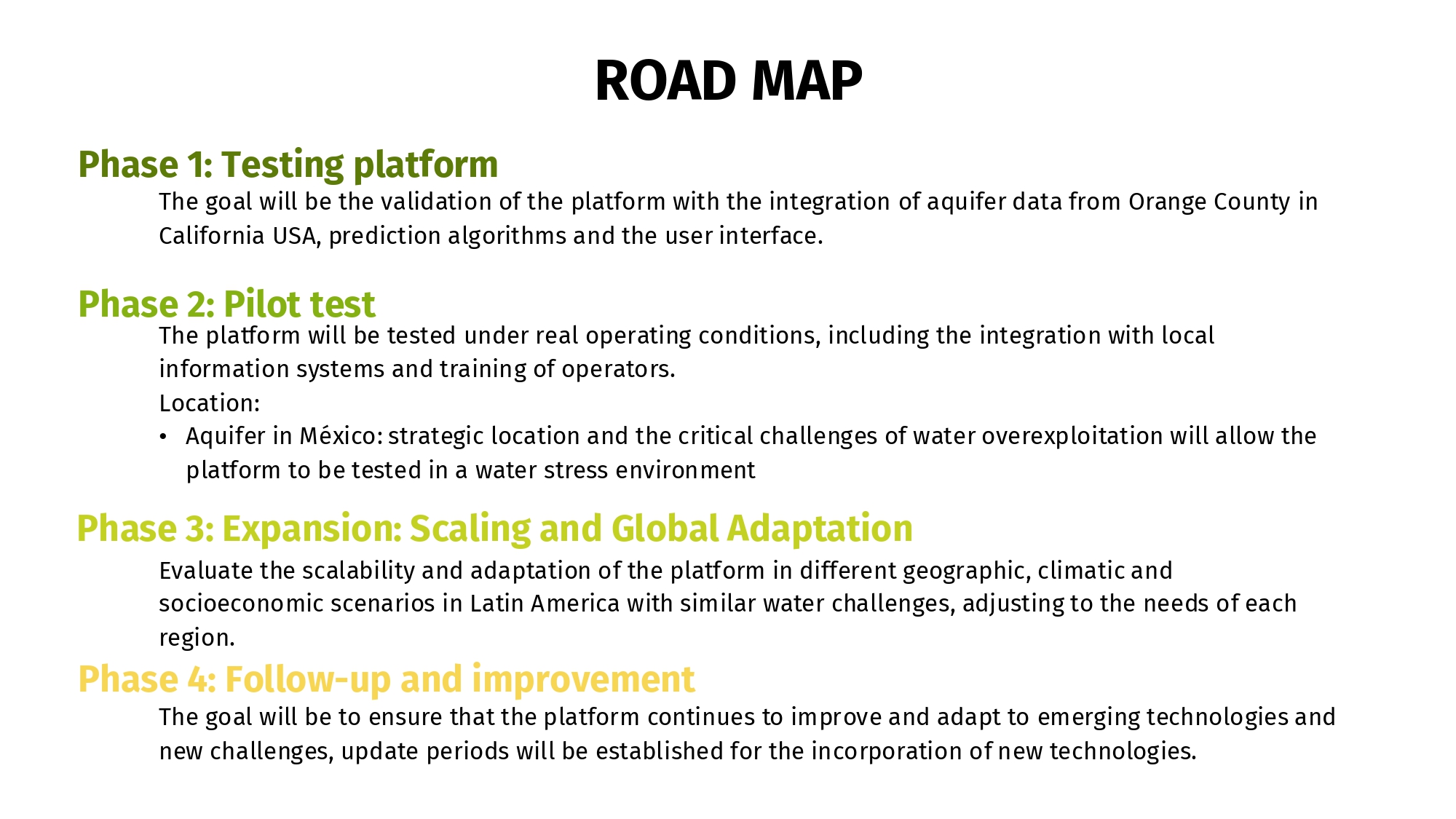
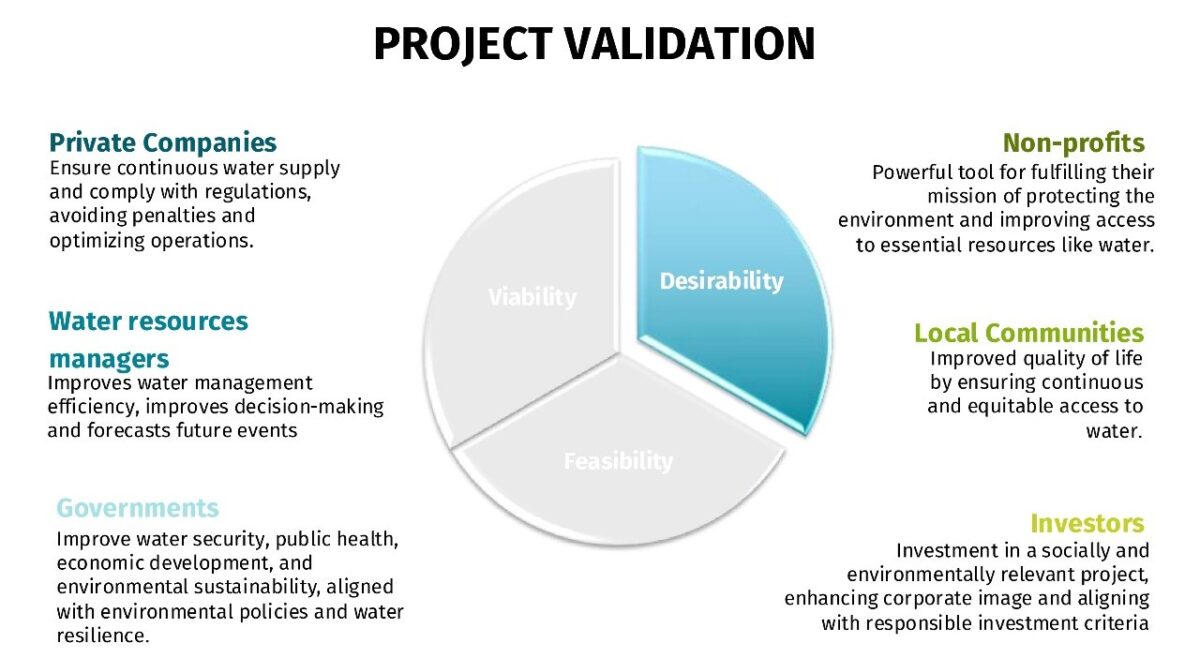
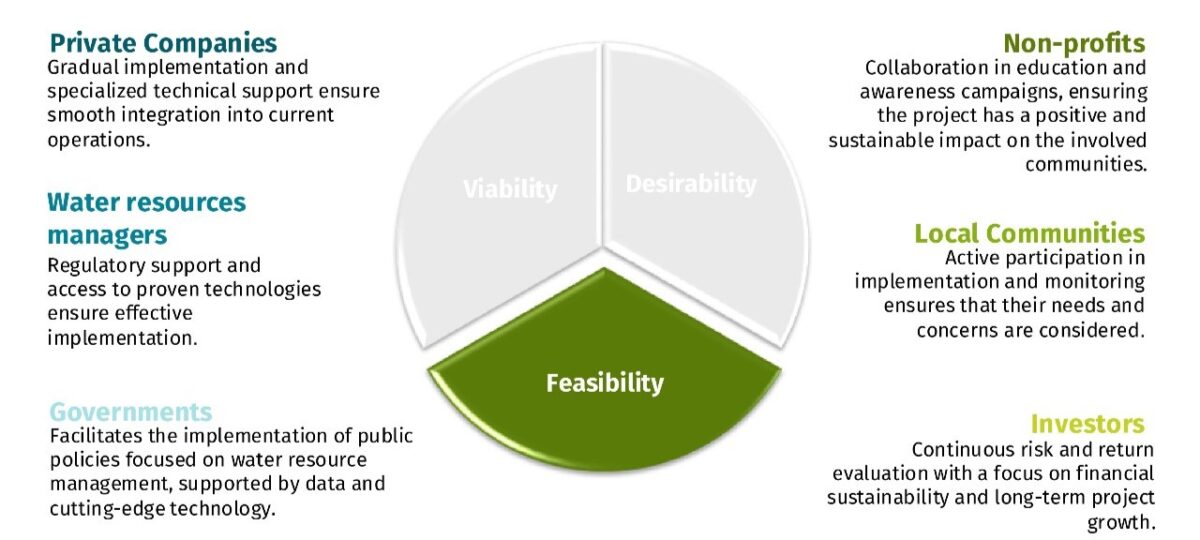
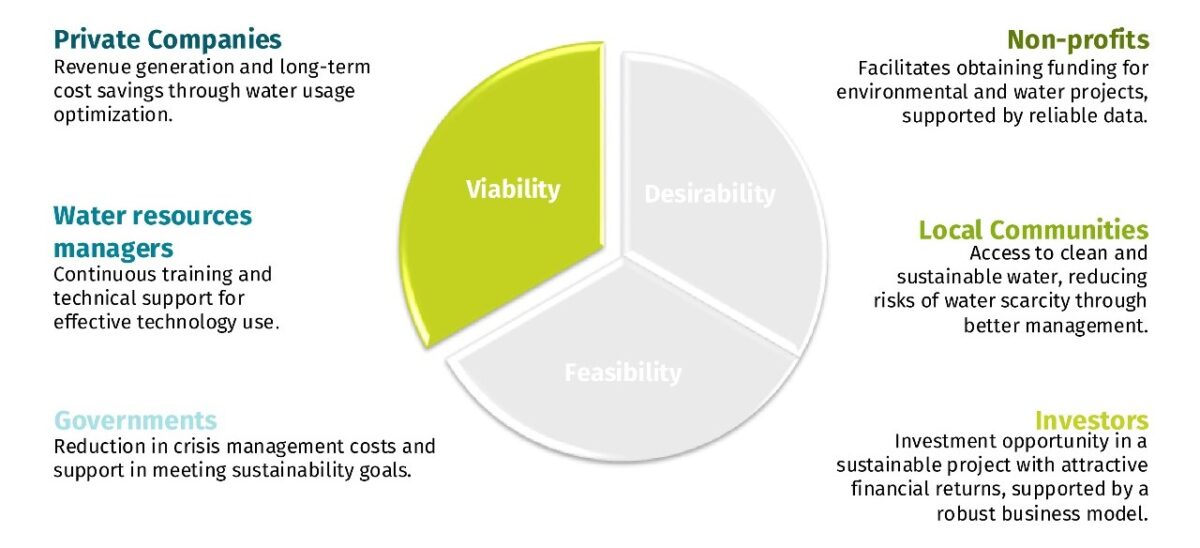


References
- United Nations: https://www.unwater.org/water-facts/water-scarcity
- International Groundwater Resources Assessment Centre (IGRAC): https://www.un-igrac.org/ggis/mar-portal
- https://ggis.un-igrac.org/view/marportal/
- National Ground Water Association (NGWA): https://www.ngwa.org/what-is-groundwater/groundwater-issues/managed-aquifer-recharge
- UNICEF: https://www.unicef.org/es/comunicados-prensa/triple-amenaza-crisis-agua-hace-peligrar-vida-millones-ninos
- National Geographic: https://www.nationalgeographic.es/ciencia/2020/03/sobreexplotacion-acuiferos-esta-acabando-con-rios
- Gorld Bank Group: https://www.worldbank.org/en/topic/water/publication/the-hidden-wealth-of-nations-groundwater-in-times-of-climate-change
Be part of the digital water transformation
By Santiago Ramirez Avila, Aidee Berenice Lara Maya, Rocío Román Rodríguez, Fernando José Díaz Cerezo & Joaquin Pintado Ochoa
